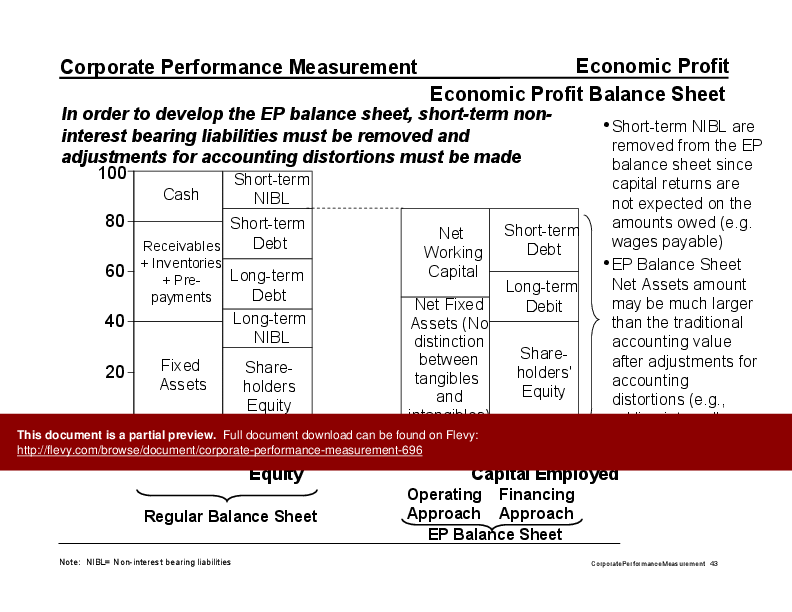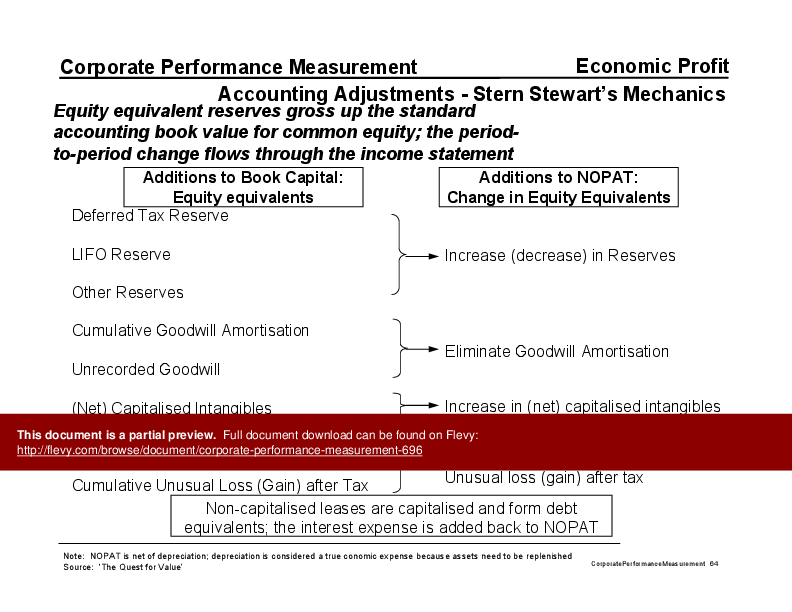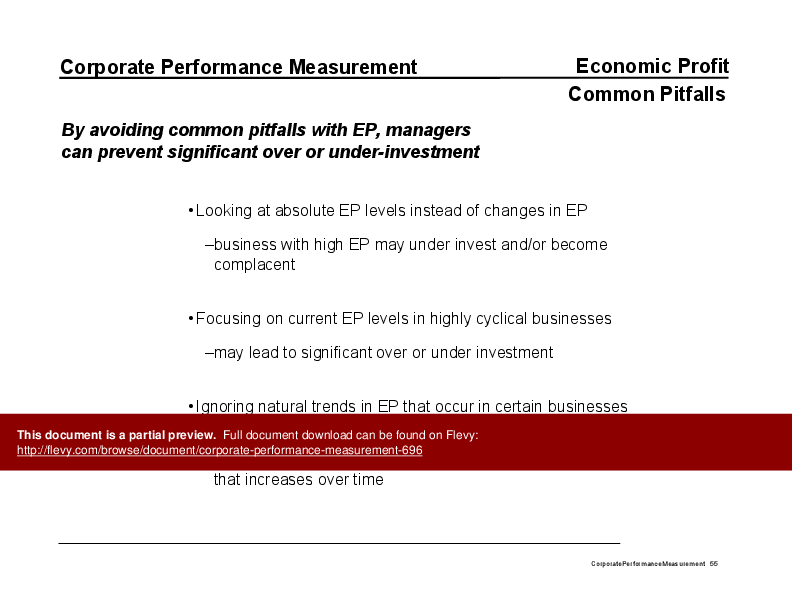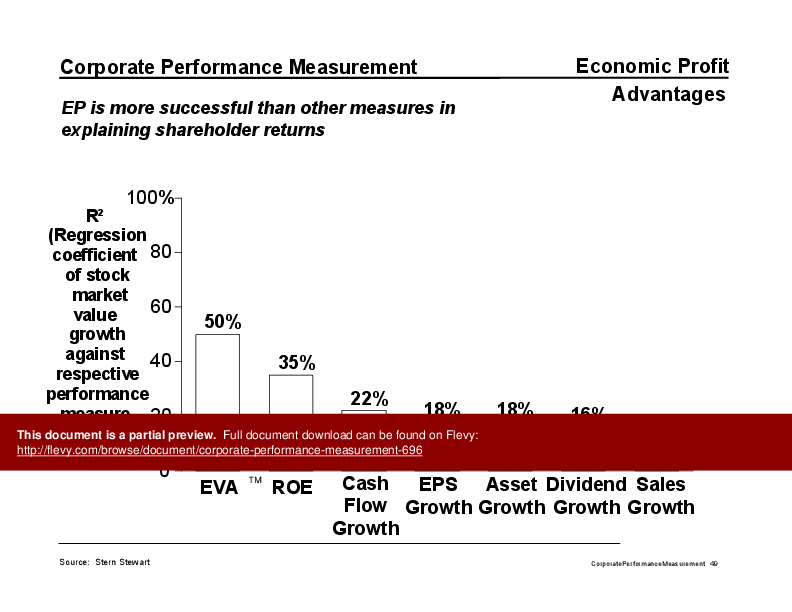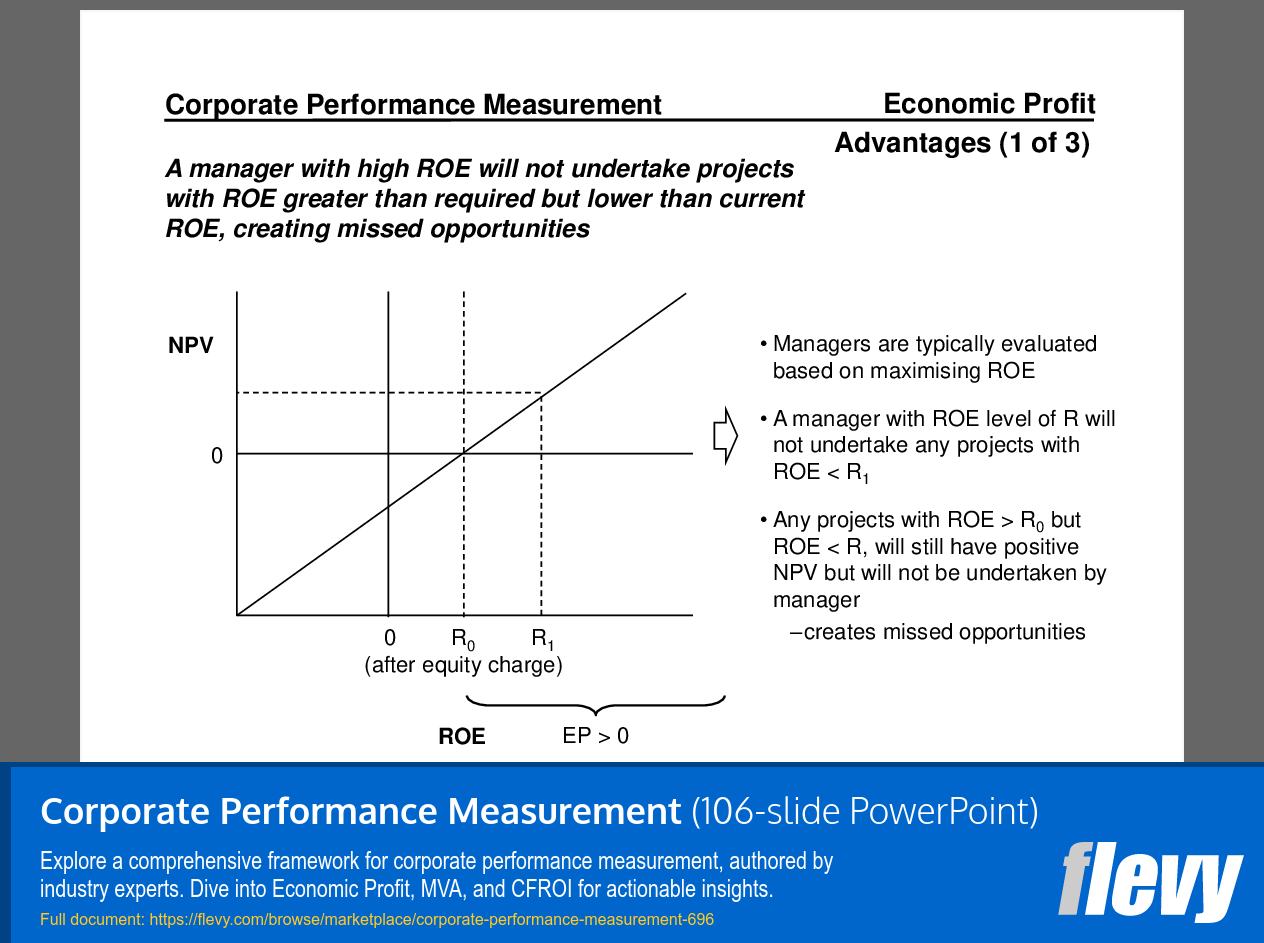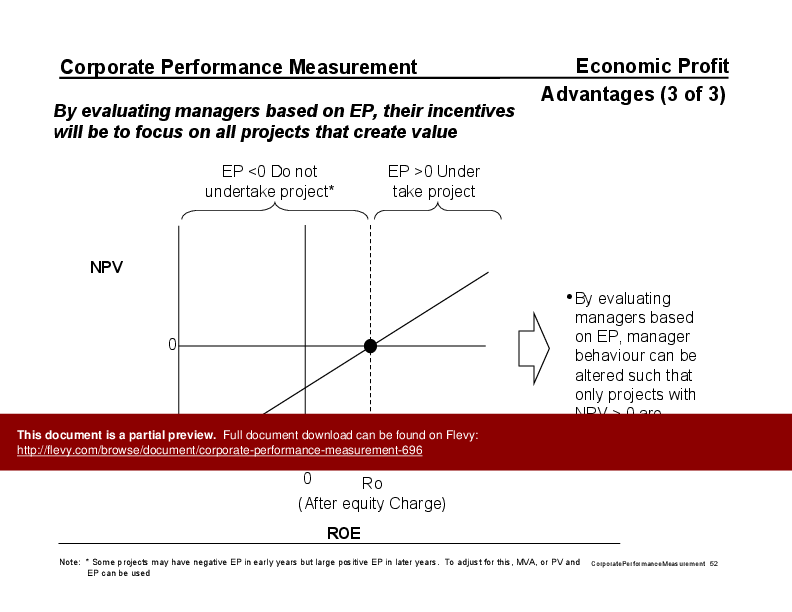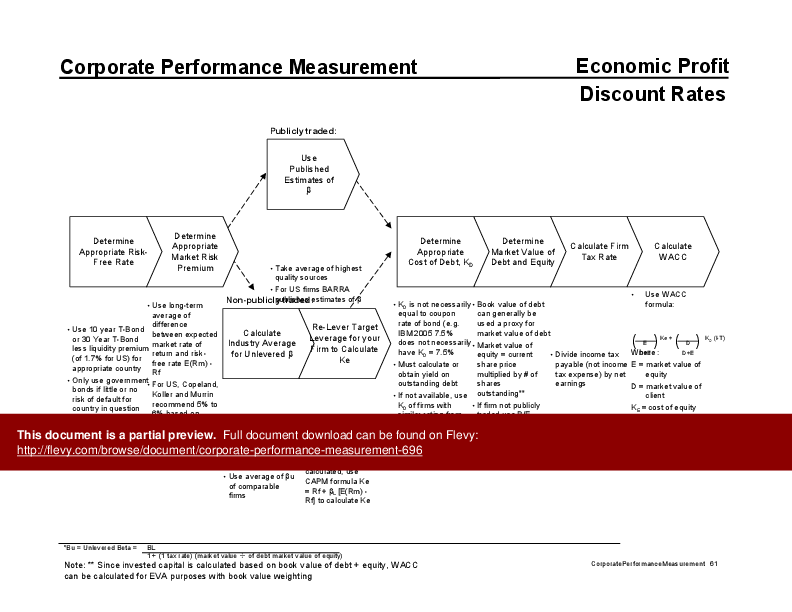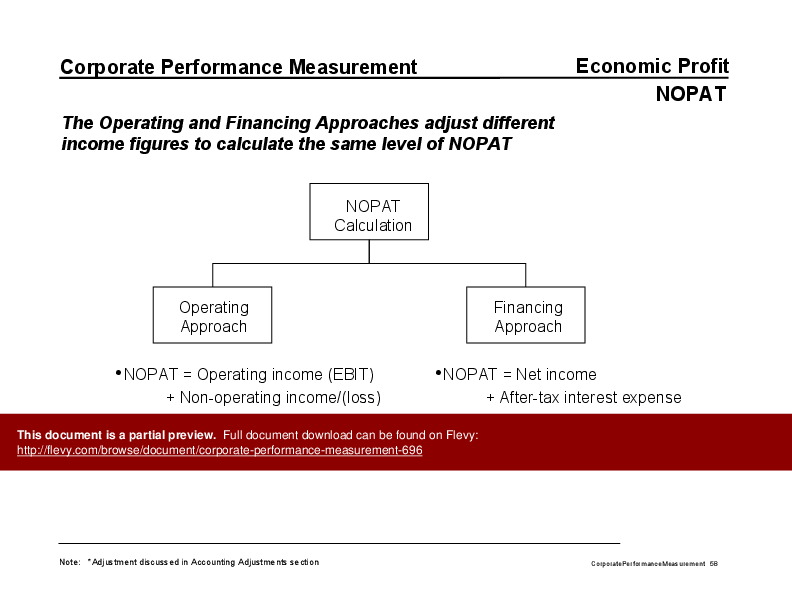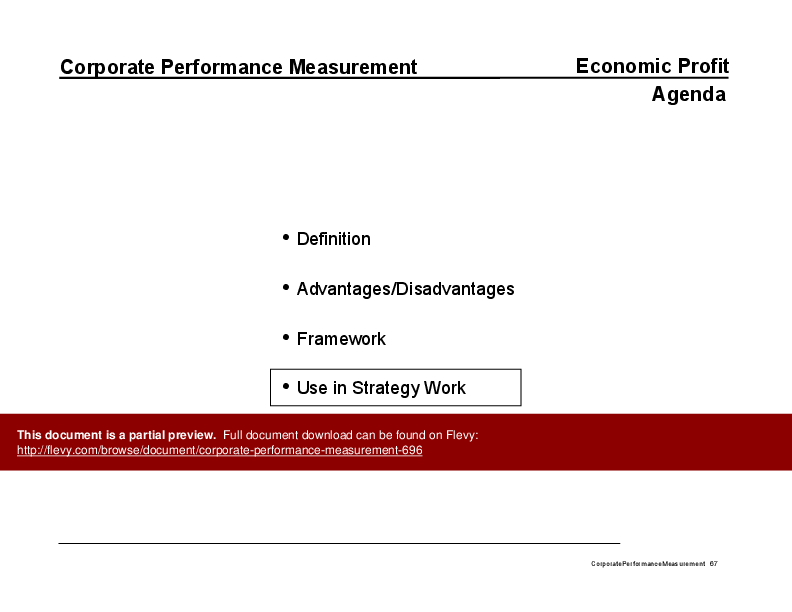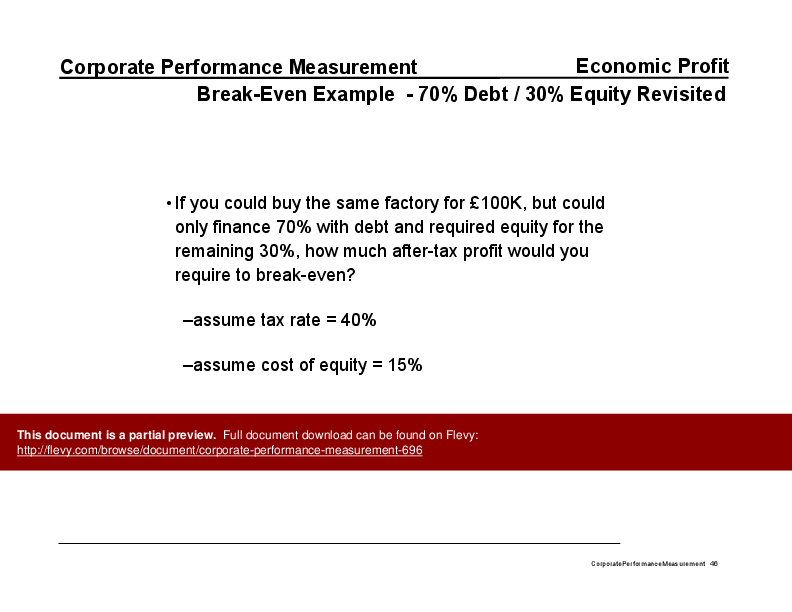Corporate Performance Measurement (PowerPoint PPT Slide Deck)
PowerPoint (PPT) 106 Slides
PERFORMANCE MANAGEMENT PPT DESCRIPTION
Corporate performance evaluation has evolved from the 1960s focus on ROE to the current variations of economic profit that measure impact on shareholder value. Both ROE and EP are business metrics, tools used to measure the performance of the business. Focusing on EP instead of ROE decreases the likelihood of destructive behavior by managers. End goal of EP exercises is consistent with traditional focus of maximizing shareholder value. All economic profit measures deduct charge for use of equity capital from accounting's typical net income or profit after tax to reflect the opportunity cost associated with equity investments.
This document provides a comprehensive framework for evaluating corporate performance, integrating key metrics like Market Value Added (MVA), Economic Profit (EP), and Cash Flow Return on Investment (CFROI). It delves into the intricacies of these measures, offering a detailed breakdown of their components and how they can be applied to real-world scenarios. The inclusion of the DuPont formula and BCG’s TBR calculation ensures a robust analysis of both publicly-listed and privately-held firms.
The case study on Diageo illustrates practical application, highlighting the importance of asset utilization and the impact of different business models on profitability. By examining the Glen Ellen system, the document underscores the significance of efficient capital allocation and the potential pitfalls of ignoring capital requirements. This real-world example provides valuable insights into how theoretical concepts can be translated into actionable strategies.
For executives looking to enhance their understanding of corporate performance measurement, this document offers a wealth of knowledge. It not only covers the theoretical aspects, but also provides practical exercises and solutions, making it an indispensable resource for anyone aiming to maximize shareholder value. The detailed analysis and step-by-step approach ensure that users can effectively implement these strategies within their own organizations.
Got a question about the product? Email us at support@flevy.com or ask the author directly by using the "Ask the Author a Question" form. If you cannot view the preview above this document description, go here to view the large preview instead.
Source: Best Practices in Performance Management, Value Creation PowerPoint Slides: Corporate Performance Measurement PowerPoint (PPT) Presentation Slide Deck, Documents & Files
PERFORMANCE MANAGEMENT PPT SLIDES
This document is available as part of the following discounted bundle(s):
Save %!
Essential Consulting Knowledge Builder
This bundle contains 21 total documents. See all the documents to the right.









